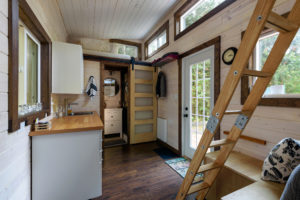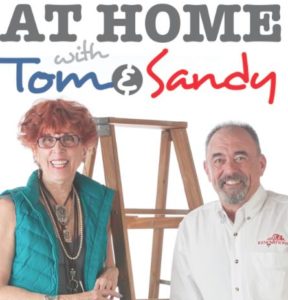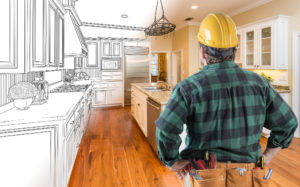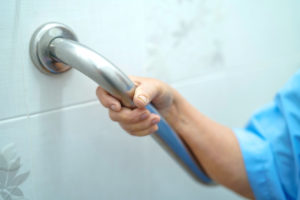Given the current cost of housing, it is certainly not surprising that the Tiny Home trend is on the upswing.
As we all know, there is plenty going on in the housing and construction industry and we want to share some fantastic, cool, groovy and helpful information with you. We are going to use our insight and local expertise to help you save time and money, and surmount obstacles of all kinds. So, settle in and enjoy.
Sandy: Hi Tom, for some reason I have been hearing more lately about “tiny homes,” and I do believe the reason is because of the need for affordable housing and workforce housing. I have been doing some reading about tiny homes and have learned quite a bit. As an architect, I’m sure you are familiar with this subject.
Tom: Yes, this is a subject that has had my attention for some time now. Tiny living spaces have been around for most of human history. What I always found fascinating is how sophisticated the designs have become.
Sandy: So, they are both trending and classic. Not just a contemporary phenomenon, then? You know, Tom, you can binge watch “Tiny House Big Living.” For sure, a girl can dream and try to get everything in 300 square feet.
Tom: Yup! Given the current cost of housing, it is certainly not surprising that the Tiny Home trend is on the upswing. Tiny living is about more than just residing in a small building, it is an entire lifestyle, and I am sure these TV shows delve into the details of what it is like to have your own tiny house.
Sandy: I know the IRC (International Residential Code for building), says the minimum size of a home is 320 square feet. But a house can be 120 square feet with a minimum of one habitable room. Not sure of the distinction there but I am not sure I could live in 120 square feet. I would have to become a real minimalist to rid myself of excess shoes, hardhats, glassware, scarves and the list goes on.
Tom: Me either. That being said, there are all manner of designs for tiny homes. Some are prefab, some site built and some on wheels.
Sandy: Well, the ones on wheels certainly are the more flexible when is comes to land purchase.
Tom: LOL. That is certain. Prefab models, manufactured homes and park models have been around for quite some time.
Sandy: And they still represent a more affordable housing alternative to a site-built home. I have seen some tiny homes that are extraordinary in their design. I am talking cool spaces that I think I might want to spend time in.
Tom: There are some excellent tiny home designs. An architect that has focused her career on the development of tiny homes is Sarah Susanka. Our readers can go to Susanka.com. She is both an architect and author who has championed the tiny home in both design and lifestyle.
Sandy: I asked Dr. Google about her. There are some outstanding designs. I am impressed with the careful thought that goes into the tiny home. Living in a tiny home requires a real lifestyle commitment as well.
Tom: I would think so. One certainly cannot be a collector of things. Lifestyle goals need to be radically different from most mainstream thinking. The accumulation of things as a representation of our achievements is not in the cards.
Sandy: The lifestyle choice begins with the mindset of a minimalist. Our accomplishment is measured by how little we need to live on.
Tom: He or she who has the least gets top bragging rights!
Sandy: LOL, probably. Getting back to the design of these homes, I have seen examples that are two stories. And there are folks who have used shipping containers as the basic structure for their tiny homes.
Tom: There are as many different material choices for the tiny home as there are for a conventional home. Tiny home design tends to not only be minimalist with space, but also structural integrity.
Sandy: The thin walls of a container as an example: To meet energy codes, you will need to use the high-density foam sprayed onto the walls, and then cover with a material that gives the space its finished look. Wow. Shipping containers have jumped in price, for sure. I saw some for sale the other day $6,500.
Tom: Shipping containers used for housing have become a real trend. The designs I have seen make them so open. Cutting in doors, large glass areas and even stacking them has produced truly spectacular homes.
Sandy: Shipping containers come in different sizes. Our readers should know they are all eight feet wide and come in 20 feet to 40 feet lengths. Most are 8’ 6” high, although you can get them 9’ 6” as well. When you start stacking and putting these puppies together, you are no longer talking a tiny home.
Tom: True. Also, the stick-built tiny homes are smaller, making structural spans shorter and affording the builder the opportunity to use smaller structural components. This also saves on precious space.
Sandy: Every inch counts. Whatever you can save on means more interior space.
Tom: Absolutely. The same space typically has several uses. Toilet rooms also serve as a shower space with no separate spaces. You might look at some of the more compact motor homes for examples of the types of multiple uses a space can have.
Sandy: Some motor homes are tiny homes on wheels!
I suppose the cost per square foot for building a tiny home can be high.
Tom: I have seen some tiny home kits that vary between $225 to as much as $300 per square foot. The cost to build depends on how you build it and what you want. The advantage is a 250-square-foot home at $250 per square foot costs a lot less than a 2,500-square-foot home.
Sandy: They are fun to see completed. I love the level of creativity that the tiny homes have. You can live simply and elegantly.
Tom: And, more affordably.
Sandy: It is important to look at zoning requirements and make changes where our jurisdictions can allow tiny homes and more manufactured homes to help with the affordability crisis.
Tom: Sandy, I could not agree more!
To end our column this month, here are a few pointers: Some tiny house owners across the U.S. are struggling to find places to park their tiny houses legally because of strict and often confusing zoning codes. Most local governments have a minimum square-footage requirement, so tiny houses are too small to be considered for full-time living. Tiny houses are also considered RVs in the eyes of most municipalities, which means people are not allowed to live in them all year.
Before spending money on a tiny house, you should consider what type of dwelling it will be and check your municipality’s zoning code. You might even have to work with the local zoning board to pass new tiny house-friendly codes.
Thanks for stopping in to read “At Home With Tom and Sandy.” You are in good company and we love sharing educational, fun and important information with you. QCBN
Tom Reilly, Architect, Renovations, 928-445-8506 renovationsaz.com
Sandy Griffis, Executive Director, Yavapai County Contractors Association, 928-778-0040
Remember to tune in to YCCA’s Hammer Time every Saturday and Sunday morning 7 a.m. on KQNA 1130 AM/99.9 FM/95.5FM or the web kqna.com. Listen to Sandy and Mike talk about the construction industry and meet your local community partners. Hammer Time is a great way to start your weekend.












